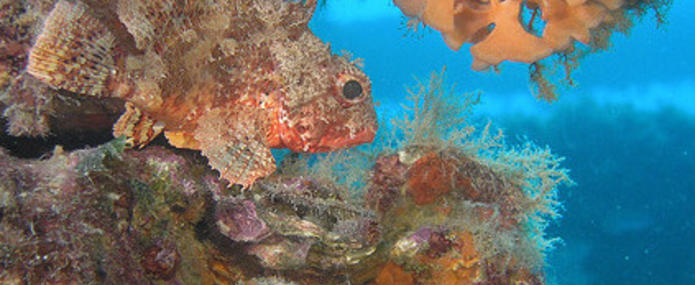The ocean moderates climatic global warming albeit through a profound alteration of its chemical and physical functioning, of its ecosystems and the services they provide to humanity (fisheries, aquaculture, coastal tourism, coastal protection, etc.). The levels of impact by the end of the century will depend heavily on the global trajectory of greenhouse gas emissions that humanity will follow between now and then[1].. However, during the COP21, countries pledged to limit the increase in global temperature at “below 2°C by 2100, or even 1.5°C”. What are the implications of such a commitment for the ocean?
This is the question addressed by researchers from IDDRI and the Oceans 2015 Initiative in a recent article in the Nature Climate Change journal. They show that by following the greenhouse gas emission scenarios derived from the “national contributions” of countries in 2015 (the INDCs), by the end of the century there would be a multiplication by a factor of 2.2 to 2.5 of the current level of impact risk on the ocean and on societies. This represents a significant difference compared to the “low emissions” scenario of the Intergovernmental Panel on Climate Change (IPCC) – known as RCP2.6, which is in line with a temperature increase of about 2°C by the end of the century compared to the pre-industrial period – which would multiply the current level of impact risk by 1.4. This analysis clearly reinforces the narrative on the absolute need for an upward revision of “national contributions” in terms of greenhouse gas emissions, which the Paris Agreement seeks to promote through a five-year revision cycle from 2020. It also points towards two conclusions that we can highlight:
Firstly, the “ocean community” has an important role to play in the post-2015 climate negotiations process: in line with the efforts made in relation to COP21 preparations, and with the objective to continue the mobilization and action towards the promotion of development models that are compatible with a temperature rise of 2°C maximum by the end of the century. Scientific analyses about which potential future scenarios should be “avoided” and which “should be hoped for” must feed continuously into the political process of reviewing the commitments of countries.
Secondly, the Paris Agreement and its implementation are a major opportunity to move from “theoretical” emission trajectories to “realistic” ones, thus better reflecting the reality and the evolution of decisions taken as part of the climate negotiations. This political process should enable the scientific “ocean” community to develop more empirical risk impact scenarios. Climate negotiations and scientific research can thus feed into each other, following their continual ebb and flow. This two-way relationship can also contribute to the special reports that IPCC will produce by 2020, one that will focus on a +1.5°C world, the other on the oceans and cryosphere (i.e. water in its solid state). Indeed, climate negotiations must have a clear vision of the potential benefits that could be obtained by ambitious mitigation efforts. This is partly the responsibility of the scientific community, including ocean specialists, who have a fundamental role in climate regulation.
[1] Read blog post of November 3, 2015 The Ocean and Climate Negotiations and the article published in Science Contrasting futures for ocean and society from different anthropogenic CO2 emissions scenarios
Firstly, the “ocean community” has an important role to play in the post-2015 climate negotiations process: in line with the efforts made in relation to COP21 preparations, and with the objective to continue the mobilization and action towards the promotion of development models that are compatible with a temperature rise of 2°C maximum by the end of the century. Scientific analyses about which potential future scenarios should be “avoided” and which “should be hoped for” must feed continuously into the political process of reviewing the commitments of countries.
Secondly, the Paris Agreement and its implementation are a major opportunity to move from “theoretical” emission trajectories to “realistic” ones, thus better reflecting the reality and the evolution of decisions taken as part of the climate negotiations. This political process should enable the scientific “ocean” community to develop more empirical risk impact scenarios. Climate negotiations and scientific research can thus feed into each other, following their continual ebb and flow. This two-way relationship can also contribute to the special reports that IPCC will produce by 2020, one that will focus on a +1.5°C world, the other on the oceans and cryosphere (i.e. water in its solid state). Indeed, climate negotiations must have a clear vision of the potential benefits that could be obtained by ambitious mitigation efforts. This is partly the responsibility of the scientific community, including ocean specialists, who have a fundamental role in climate regulation.
[1] Read blog post of November 3, 2015 The Ocean and Climate Negotiations and the article published in Science Contrasting futures for ocean and society from different anthropogenic CO2 emissions scenarios



